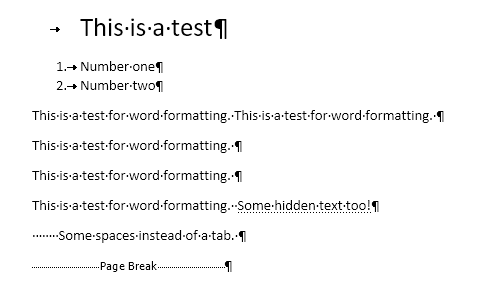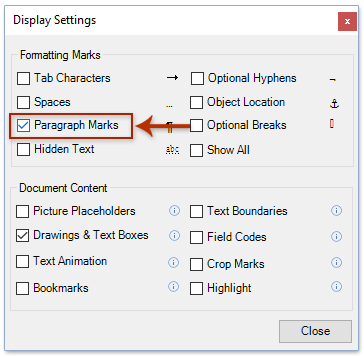

The easiest and most visual way is with the ribbon (Home → Font). It’s easy to change the formatting, and Word gives you quite a few different ways to do it. The formatting describes the typeface, the size of the character, the color, and whether or not the character is underlined, bold, or capitalized. Many documents have only one section, so when you make formatting changes to a section, you’re actually formatting the entire document.Įvery character in your document is formatted. When you change margins, page orientation, page size, and the number of columns per page (all described in Chapter 3), you’re formatting the section. Use the Page Setup dialog box (Alt+P, SP) to format sections. When you select characters within a paragraph and change the font settings, you override the basic font description in the paragraph’s style. Because characters are part of paragraphs (remember those Russian nesting dolls), every paragraph includes a basic font description. You don’t have to select a paragraph to format it just click to place the insertion point within a paragraph. You can set formatting for text alignment, indents, line spacing, line breaks, and paragraph breaks.

Use the Paragraph dialog box (Alt+H, PG) to format paragraphs. Word uses the term font, probably because it’s shorter and therefore easier to fit into a dialog box. The term font was more specific, referring to variations within a typeface such as bold, narrow, or italic. Prior to the use of computers, groups of letters, numbers, and punctuation of a certain style, such as Helvetica or Bodoni, were called typefaces.
List of word formatting marks how to#
Finally, you find out how to copy and reuse formatting with tools like the Format Painter and style sets.

You learn how to format paragraphs with indents and spacing, and how to control the way Word breaks up the words in a line and the lines in a paragraph. This chapter starts with the basics: how to format individual characters and words-selecting fonts and making characters bold, italicized, underlined, or capitalized. Quotes and references should be set off from the other text. Important words need to resonate with emphasis. Headings should be big and bold, and they should also be consistent throughout your document. Body text needs to be readable and easy on the eyes. You can apply formatting to just about every element of your document, from a single character to entire paragraphs. Good formatting distinguishes different parts of your text and helps your readers take in your message. Microsoft does not guarantee the accuracy of this information.Chapter 4. Formatting Text, Paragraphs, and Headingsįormatting is the fine art of making your documents effective and attractive. Please Note: Since the web site is not hosted by Microsoft, the link may change without notice. (File> Word Options>Display>Check/Uncheck Show These Formatting Marks ) We may show/hide the non-printing character. In tables you will see one additional character, the universal monetary symbol (¤), which displays variously at various point sizes and magnifications but upon close inspection is seen to be a circle with four lines radiating from the corners More accurately control the look of your document and what it contains. You can quickly tell, for instance, when you have inserted two spaces between words or added an extra carriage return. As far as I know, the non printing character is much easier to understand spacing when the characters are displayed.


 0 kommentar(er)
0 kommentar(er)
